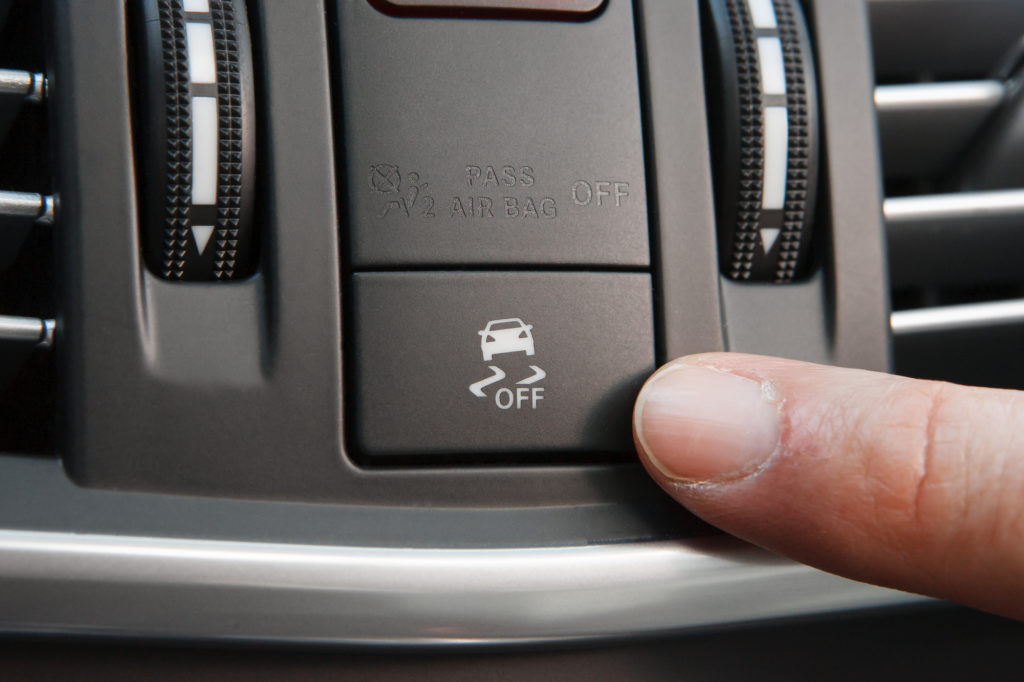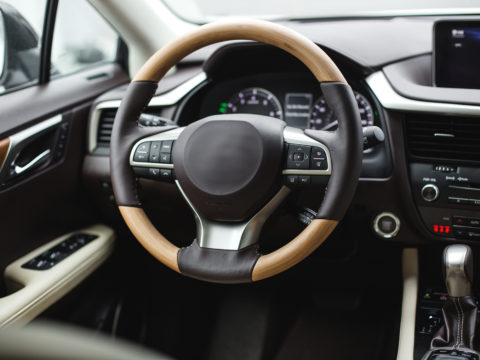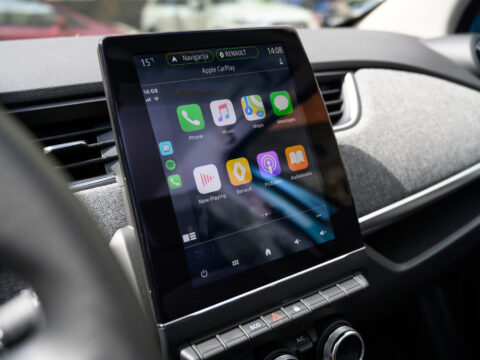If you’re looking for what causes the ESC light to come on at the dashboard of your vehicle, you’re probably seeing some kind of warning light when you’re driving. Since the ESC system is very important for overall safety, let’s look carefully at this light is and why it might be illuminating.

Contents
What Does ESC Light Stand For?
The ESC light is related to the Electronic Stability Control system on your car. Not every vehicle manufacturer uses the same acronyms, so you might see Electronic Stability Program (ESP) or Dynamic Stability Control (DSC), depending on your vehicle’s make. Some manufacturers, like Porsche, integrate their brand name into the system’s terminology.
Electronic Stability Control Symbol
The ESC symbol is also something that varies by the vehicle’s manufacturer. But, the symbol often looks something like this. Some vehicles might have a triangle with an exclamation point in the middle, and others might say ESC, DSC, or ESP right on the dash.
There is often a button somewhere on the instrument cluster where the driver can adjust the settings on the stability control system. Check your owner’s manual to make sure you know what system you have, where the buttons are, and what lights you might see.
What Does the Esc Do in a Car?
Even though the system’s name varies considerably by vehicle, the principle is the same. Stability control systems use the data coming off the car’s sensors to help keep you traveling in the direction you intend to.
Your car’s anti-lock braking system (ABS) can detect interruptions in your braking cadence, like when the car slips on ice or a puddle. The stability control system takes that data, as well as information about the angle of your steering wheel and if any wheels are spinning, and adjust braking and power to keep you moving where you want to.
For a real-world example, consider if you’re taking a turn on a snowy road. When you hit the brakes, the ESC and ABS might detect that one of the brakes is at risk of locking. That can potentially cause you to lose control of the steering.
Instead, the system intervenes and prevents lockup by modulating the brakes automatically, allowing you to maintain your steering without losing control. Then, if the car slips on the snow as you hit the gas to come out of the turn, the ESC system limits the power to the wheels that are spinning too much and directs more power to the ones that have solid traction. If the vehicle keeps sliding, the ABS system will automatically apply the brakes to keep you safe.
Why the ESC Light Comes On
The ESC light can come on for a bunch of different reasons. They’re not all bad, but you should closely monitor this light if it turns on, even if just for a second. The system is trying to tell you something important.
The System Is Working
When you encounter situations that trigger intervention from the ESC system, the ESC light will illuminate on the dashboard. This is a signal to you that the vehicle is slipping. There’s nothing wrong, and the light will stop flashing when you regain control.
You Have Disabled ESC
There are a few reasons why you might want to shut off the ESC system. For instance, if you’re driving up an incline and need to spin the tires to gt over an icy patch, you might need to turn the ESC off to do so. Because the system is so important to overall safety, the light will remain on until you re-enable the system.
Steering Angle Sensor Failure
Without data from the steering angle sensor, your car’s ESC system can’t compare the data from your brakes and wheels to the direction you are aiming the car. So, if the steering angle sensor fails, you’ll see a warning light on the dashboard.
ABS or Wheel Speed Sensor Issues
If the ABS system or the wheel speed sensors aren’t working right, your car will let you know via a light on the dash. That’s because the information from the sensors and the activity of the ABS system all feed into the overall control of the ESC system. Sometimes, you might even see multiple lights from all the different systems.
Electrical or Other Issues
If your car has an electrical issue that prevents one or more components of the ESC system from functioning, it might trigger an ESC warning light. You’ll have to investigate to find the underlying cause that triggered the warning light. Keep in mind that these systems are fairly sensitive.
So, if you’ve recently changed the battery, replaced the tires, or had brake maintenance performed, you should make sure that everything was put back together properly. In some cases, you may have to reinitialize the ESC system after maintenance. Even small changes can upset the vehicle’s ESC system, so always make sure to follow the post-maintenance procedures in your owner’s manual.
What It Means When the ESC Light Comes On
When the ESC light comes on, it can mean a few things. For instance, it might just mean that you’ve shut it down. Or if it pops up while you’re driving in a low traction situation, it probably means that your car slipped a little bit and the system intervened. In that case, it will shut right back off.
If you didn’t press any buttons, and the ESC light comes on for seemingly no reason, you probably have an issue with the system.

How Do You Reset the ESC Light? Is it Safe to Drive with ESC Light On?
You can sometimes reset the ESC light by simply turning the system back on. That only works if you have shut it off intentionally. If the light is on because of a low traction event, it will shut off when the system has done its work and corrected the issue. But if the light is on because part of the system isn’t working right, you probably need to have things checked out by a mechanic.
If the ESC light is on and you want to try and reset it yourself, you have three options:
- Use a code reader to scan the computer for the issue
- Unplug the battery from the car overnight to reset the computer
- Check your owner’s manual to see if there is a way to reinitialize or reset the system
Keep in mind that resetting the system without fixing the underlying issue could be quite dangerous.
So, What Should You Do If Your ESC Light Comes On?
As you can see by now, that depends on what triggered the light in the first place. If it’s on because you’re driving in a low-traction situation, just drive carefully. If it’s on because you’ve shut the system off, turn it back on when you’re ready.
And if the light is on because part of the ESC system isn’t working right, don’t delay in troubleshooting and repairing the system.














